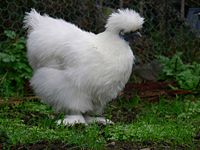
Identification of two CUL7 variants in two Chinese families with 3‐M syndrome by whole‐exome sequencing
Sign Up to like & getrecommendations! Published in 2020 at "Journal of Clinical Laboratory Analysis"
DOI: 10.1002/jcla.23265
Abstract: 3‐M syndrome is a rare autosomal recessive disorder characterized by primordial growth retardation, large head circumference, characteristic facial features, and mild skeletal changes, which is associated with the exclusive variants in three genes, namely CUL7,… read more here.
Keywords: two chinese; chinese families; cul7 variants; variants two ... See more keywords

Two Chinese Xia‐Gibbs syndrome patients with partial growth hormone deficiency
Sign Up to like & getrecommendations! Published in 2019 at "Molecular Genetics & Genomic Medicine"
DOI: 10.1002/mgg3.596
Abstract: Heterozygous mutations in the AT‐hook DNA‐binding motif containing one (AHDC1, OMIM * 615790) gene cause an autosomal dominant multisystem developmental disorder known as Xia‐Gibbs syndrome (OMIM #615829). Xia‐Gibbs syndrome typically presented with global developmental delay,… read more here.
Keywords: two chinese; chinese xia; xia gibbs; gibbs syndrome ... See more keywords

Pathogenic mutations in two Chinese patients exhibiting severe early-onset obesity
Sign Up to like & getrecommendations! Published in 2019 at "Science China Life Sciences"
DOI: 10.1007/s11427-018-9443-0
Abstract: McKusick-Zhang Center for Genetic Medicine, Institute of Basic Medical Sciences Chinese Academy of Medical Sciences, School of Basic Medicine Peking Union Medical College, Beijing 100005, China; Capital Institute of Pediatrics, Beijing 100020, China; Department of… read more here.
Keywords: medicine; pathogenic mutations; mutations two; two chinese ... See more keywords

Experimental assessment of novel PAX6 splicing mutations in two Chinese families with aniridia.
Sign Up to like & getrecommendations! Published in 2017 at "Gene"
DOI: 10.1016/j.gene.2017.07.073
Abstract: Aniridia is a rare, congenital ocular disorder caused by the mutations of the paired box gene-6 (PAX6) (OMIM 607108), which encodes a highly conserved transcriptional regulator. In order to investigate the clinical characterizations and genetic… read more here.
Keywords: pax6; two chinese; novel pax6; experimental assessment ... See more keywords

EYA1 mutations leads to Branchio-Oto syndrome in two Chinese Han deaf families.
Sign Up to like & getrecommendations! Published in 2019 at "International journal of pediatric otorhinolaryngology"
DOI: 10.1016/j.ijporl.2019.05.006
Abstract: OBJECTIVES Branchio-Oto (BO) syndrome is one of the common syndromic forms of hearing loss. In this study, we aimed to characterize the clinical and genetic features of BO syndrome in two Chinese Han deaf families.… read more here.
Keywords: oto syndrome; branchio oto; chinese han; syndrome two ... See more keywords

Endocrinal description of two Chinese Kennedy’s disease pedigrees
Sign Up to like & getrecommendations! Published in 2018 at "Journal of Clinical Neuroscience"
DOI: 10.1016/j.jocn.2017.10.037
Abstract: Kennedy's disease (KD), also known as X-linked spinal and bulbar muscular atrophy (SBMA), is caused by the expansion of cytosine-adenine-guanine (CAG) repeats in the first exon of the androgen receptor (AR) gene. KD is a… read more here.
Keywords: kennedy disease; two chinese; disease; family survey ... See more keywords

Cryptic exon activation causes dystrophinopathy in two Chinese families
Sign Up to like & getrecommendations! Published in 2020 at "European Journal of Human Genetics"
DOI: 10.1038/s41431-020-0578-z
Abstract: The X-linked recessive degenerative disease dystrophinopathy results from variants in the DMD gene. Given the large size and complexity of the DMD gene, molecular diagnosis for all dystrophinopathies remains challenging. Here we identified two cryptic… read more here.
Keywords: causes dystrophinopathy; exon activation; two chinese; activation causes ... See more keywords

Polymorphisms of the prolactin gene and their association with egg production traits in two Chinese domestic ducks
Sign Up to like & getrecommendations! Published in 2019 at "British Poultry Science"
DOI: 10.1080/00071668.2019.1567909
Abstract: ABSTRACT 1. Prolactin (PRL) as a polypeptide hormone which plays a crucial role in egg production traits. 2. Polymorphisms of the PRL gene were analysed with DNA sequencing and polymerase chain reaction-single-strand conformation polymorphism methods… read more here.
Keywords: production traits; two chinese; egg; egg production ... See more keywords

Clinical Exome Sequencing Identifies NDP Gene Variants in Two Chinese Families with X-Linked Norrie Disease.
Sign Up to like & getrecommendations! Published in 2022 at "Genetic testing and molecular biomarkers"
DOI: 10.1089/gtmb.2022.0142
Abstract: Purpose: To explore the genetic defects in two Chinese families with X-linked Norrie disease (ND). Methods: We analyzed two Chinese families with ND at molecular level through clinical exome sequencing and the variations were identified… read more here.
Keywords: two chinese; clinical exome; ndp gene; chinese families ... See more keywords

New Mitogenomes of Two Chinese Stag Beetles (Coleoptera, Lucanidae) and Their Implications for Systematics
Sign Up to like & getrecommendations! Published in 2017 at "Journal of Insect Science"
DOI: 10.1093/jisesa/iex041
Abstract: Although conspicuous and well-studied, stag beetles have been slow to join the genomic era. In this study, mitochondrial genomes of two stag beetles, Sinodendron yunnanense and Prosopocoilus confucius, are sequenced for the first time. Both… read more here.
Keywords: mitogenomes two; chinese stag; two chinese; new mitogenomes ... See more keywords

HLA‐B*38:165N and HLA‐B*51:309 alleles identified in two Chinese cervical intraepithelial neoplasia patients
Sign Up to like & getrecommendations! Published in 2020 at "HLA"
DOI: 10.1111/tan.13824
Abstract: The new HLA‐B*38:165N and HLA‐B*51:309 alleles in two Chinese cervical intraepithelial neoplasia patients. read more here.
Keywords: hla 309; two chinese; 309 alleles; hla ... See more keywords